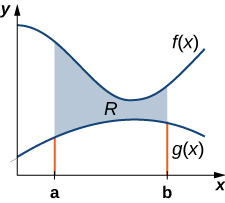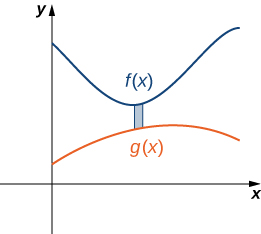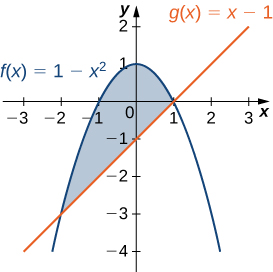| << Chapter < Page | Chapter >> Page > |
Let R be the region bounded above by the graph of the function and below by the x -axis over the interval Find the centroid of the region.
The centroid of the region is
We can adapt this approach to find centroids of more complex regions as well. Suppose our region is bounded above by the graph of a continuous function as before, but now, instead of having the lower bound for the region be the x -axis, suppose the region is bounded below by the graph of a second continuous function, as shown in the following figure.

Again, we partition the interval and construct rectangles. A representative rectangle is shown in the following figure.

Note that the centroid of this rectangle is We won’t go through all the details of the Riemann sum development, but let’s look at some of the key steps. In the development of the formulas for the mass of the lamina and the moment with respect to the y -axis, the height of each rectangle is given by which leads to the expression in the integrands.
In the development of the formula for the moment with respect to the x -axis, the moment of each rectangle is found by multiplying the area of the rectangle, by the distance of the centroid from the x -axis, which gives Summarizing these findings, we arrive at the following theorem.
Let R denote a region bounded above by the graph of a continuous function below by the graph of the continuous function and on the left and right by the lines and respectively. Let denote the density of the associated lamina. Then we can make the following statements:
We illustrate this theorem in the following example.
Let R be the region bounded above by the graph of the function and below by the graph of the function Find the centroid of the region.
The region is depicted in the following figure.

The graphs of the functions intersect at and so we integrate from −2 to 1. Once again, for the sake of convenience, assume
First, we need to calculate the total mass:
Next, we compute the moments:
and
Therefore, we have
The centroid of the region is

Notification Switch
Would you like to follow the 'Calculus volume 1' conversation and receive update notifications?